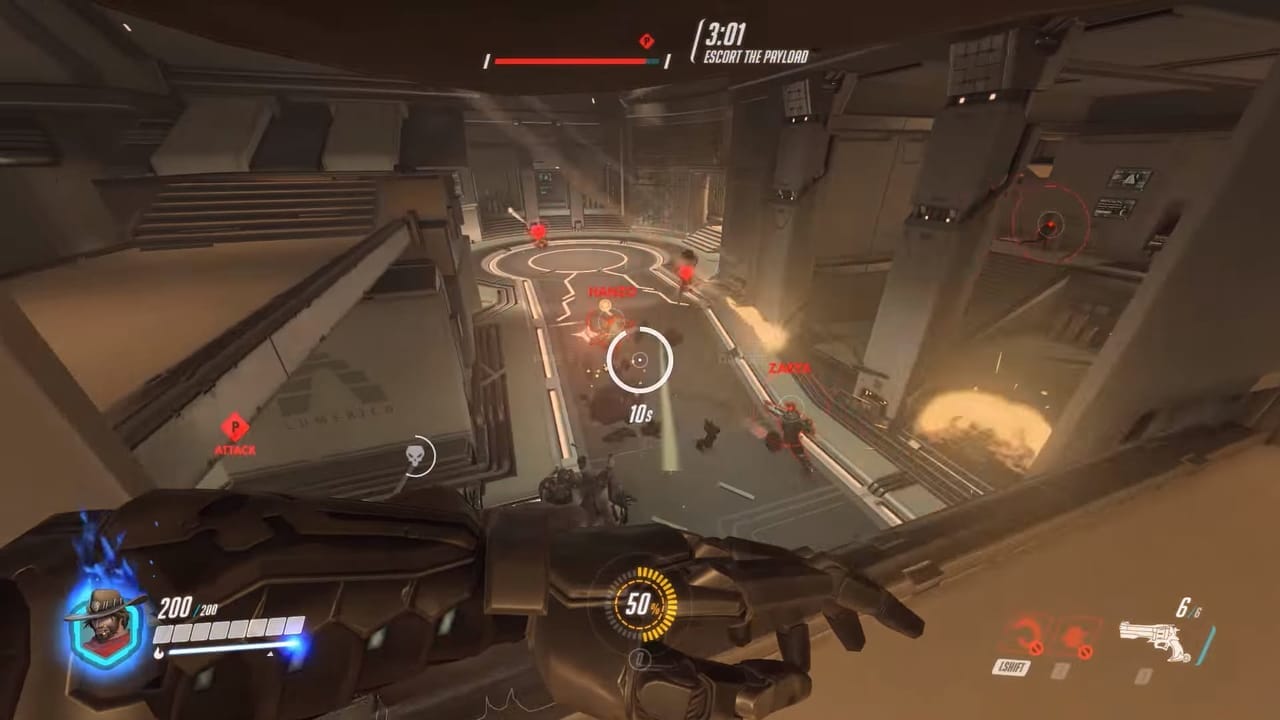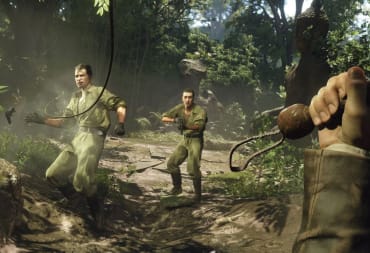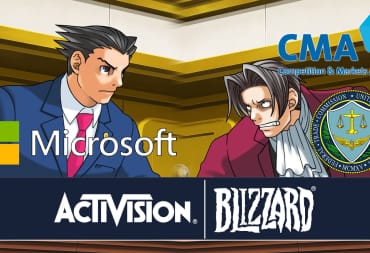2016 was a pretty good year for multiplayer gaming, especially if you're an FPS fan. Our nominees of course include plenty of FPS games, but also include a fighting game in Pokkén Tournament and the unique multiplayer of Dark Souls III. While 2016 may not have seen a lot of innovation in the multiplayer scene, in terms of new ideas, it did see a lot of refinement.
Here's the list of nominees (and here's a list of all nominees for all categories):
- Battlefield 1 (Game Page)
- Dark Souls III (Game Page)
- Pokkén Tournament (Game Page)
- Overwatch (Game Page)
- Titanfall 2 (Game Page)
Reader's Choice - Overwatch (Our Review)
This is certainly not a surprise to see with the juggernaut that Overwatch has become. It's also a new IP from Blizzard, whose fan base is rabid to say the least. Regardless, Overwatch is nothing but multiplayer and it excels at it in almost every way. We can probably expect it to be around for a long time. Interestingly, readers' top three choices mirror ours as well, though Overwatch took a bit more of a runaway victory here with over 50% of the votes.Third Place - Dark Souls III (Our Review)

By Alex Eich
Demon’s Souls in 2009 reinvented the concept of multiplayer. Letting the player decide whether to be a friend or foe in another player’s game? FREAKIN’ GENIUS. 2011’s Dark Souls refined this formula by introducing covenants, so Sunbros could “Praise the Sun!” together, Darkwraiths could show no mercy, and Dragon Bros could…uh…never mind.Years later we have the conclusion of the Souls series. With Dark Souls III, director Hidetaka Miyazaki switched the multiplayer formula on its head. It can best be summed up in one word: “CHAOS.” Dark Souls III allows multiplayer sessions to overflow with both allies and enemies. The Mound Makers covenant provides players with a wild card co-op experience that could spiral downhill any second. The Aldritch Faithful covenant became a fan favorite as multiple players in Irithyll make sure invaders stay off their lawn. Pontiff Sulyvahn’s back porch became the go-to site for fight clubs and organized PVP.
Dark Souls III took the multiplayer to its extremes and it became almost silly at times. I personally remember role playing as Unbreakable Patches and trying to kick other players off cliffs (It didn’t work). One look at YouTuber Iron Pineapple shows the many goofy possibilities of Dark Souls III, and I can only imagine what users will come up with in the coming years.
Unfortunately, Dark Souls III is a runner up in this category because the multiplayer wasn’t entirely perfect. Darkmoon Blades and Blue Sentinels were under-utilized, frustrating “Gank squads” were commonplace, and the game’s “Poise controversy” was a huge debate among fans for months.
Despite these issues, Dark Souls III multiplayer is still one of the best experiences of the year. It goes to show how influential a multiplayer is when the PlayStation 4’s “Share features” were influenced by the Souls’ series multiplayer.
Second Place - Titanfall 2 (Our Review)

By Alex Santa Maria
Much of the hullabaloo surrounding Titanfall 2’s launch (as well as the majority of my review) concerned the game’s shiny new campaign mode. While that collection of missions is more than worthy of the high praise that it received, it’s not the entire story of that game. Multiplayer is the beating heart that keeps Titanfall moving, and Titanfall 2’s offering continues to be an excellent and engaging alternative to the more standard modern military competition.Switching to a more MOBA-esque system of mechs as loadouts with names and set abilities was controversial at first, but there proved to be enough variety in Titanfall 2’s unlock system to mitigate these issues somewhat. Settling into one or two favorite classes and learning their various idiosyncrasies made the hours fly by, and adding giant mech-sized miniguns and swords to the equation makes my inner child squeal with glee.
On foot, there are a multitude of new options in play, and it never seemed that one strategy was taking over the metagame in the time I played. I met stealthy snipers and fast moving soldiers wielding explosive shuriken. In addition, the sense of scale when climbing a Titan and ripping a battery out of its chassis is still something to behold, and that hasn’t been replicated in any of Titanfall’s many imitators in the years since the launch of the original.
Speed is back in FPS, and Titanfall 2 is leading the charge, keeping the traditions of skilled movement and sci-fi weaponry alive with a style and substance that will keep players coming back again and again.
Winner - Overwatch (Our Review)

By Luigi Savinelli
There’s a weird charm around Overwatch. It’s something that people can’t just really put their finger on.Despite the shortcomings of the game itself (the value proposition for the price point has been discussed to no end, especially considering the maps and modes available on day one), the game managed almost effortlessly to capture the imagination and the heart of the gaming community. One could argue that the trademarked Blizzard polish in game making is, yet again, doing its miracle. Others argue that the never ending controversies around Overwatch gave a lot of free publicity to the game. All of this has a part in it, but we at TechRaptor think that the success of Overwatch depends on a much simpler reason: it plays like a dream.
The gameplay design of Overwatch is simple enough to make the entry bar low enough to allow pretty much anyone to take up the game and play while leaving, at the same time, a skill ceiling high enough to make it esports material. From a design standpoint, the characters’ skillset is really varied, and it allows for pretty great combos and interesting plays.
It just seems that every time you start a game in Overwatch, you have a different experience. Sure, everyone has a favorite strategy or a way they like to play certain heroes, but in a blink of an eye an enemy can disrupt your plans with a perfect play, and you’re forced to adapt and succumb (unless you just play Hanzo and refuse to switch).
The ability to switch characters on the fly (a feature of TF2-esque heritage) united with the unique skillset of each of the heroes, force you to think strategically, act quickly, and react in a blink. In most multiplayer games, team composition is one of the most important things to consider in this kind of games, and with a package like the one Overwatch offers, it becomes of paramount importance. Even more considering the huge part level design takes in the experience. Knowing the map’s chokepoints, blind spots, and sniper nests along with the heroes that will be able to take advantage of them and how to counter them, gives a great advantage to skillful and knowledgeable players.
The bottom line is Overwatch is an engaging multiplayer experience like few others in recent memory. Sure, the universe surrounding it is interesting, the game is quite the looker, and it runs really well, but what makes it more enjoyable than its rivals is the capability of giving you an adrenaline rush every time you start a new match. No matter how much you play it, it seems to never get old. Sure it had a lack of map variety at launch, but with the new modes, heroes, and maps being added, there’s a lot more content to play.
Overwatch also has the merit of putting a genre in the spotlight that didn’t see much action since Team Fortress 2 and Super Monday Night Combat, and that’s a win-win for everyone involved.
What did we miss? What did we get wrong? What did we get right?
Have a tip, or want to point out something we missed? Leave a Comment or e-mail us at tips@techraptor.net












